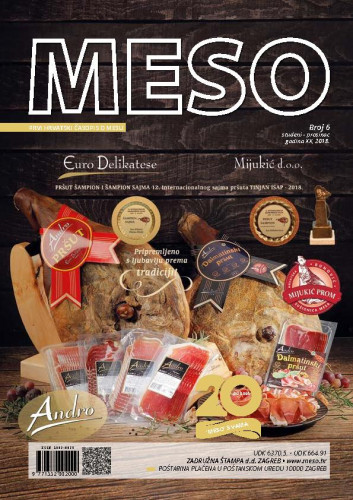The purpose of this paper was to verify the shelf life of fresh chicken meat and offal (grilled chicken, drumsticks, wings, and liver, hearts and gizzards) by determining the microbiological status and the presence of Salmonella bacteria, and the total number of aerobic mesophilic bacteria, Listeria monocytogenes, Escherichia coli and Enterobacteriaceae during the nine days of storage, as well as to determine the correlation between microbial growth of certain bacteria with respect to the test interval and established pH values. The obtained results served to determine farm's rating and classification in relation to the established microbiological status. All products tested in relation to their microbiological quality maintained their hygienic safety within their 7-day shelf life. Only grilled chicken sample remained within the prescribed microbiological criteria limits on the ninth day after production. We established positive correlation with variable degree of correlation between the total number of bacteria isolated from chicken meat samples originating from all farms and the test interval, as well as the positive and negative correlation with variable degree of correlation, and the complete absence of correlation between the total number of bacteria isolated from samples and resulting pH values. Because the highest counts of certain bacteria on the seventh and ninth day for individual farms that were the subject of the study differed even though we examined the same type of product, we carried out a classification of individual farms. The conditions for keeping, transporting and slaughtering broilers, as well as the adequate storage of related products, have a significant impact on the microbiological status, hygienic safety and shelf life of fresh chicken meat.
Sažetak

 Meso : prvi hrvatski časopis o mesu : 20,6(2018) / glavna i odgovorna urednica, editor-in-chief Katarina Lučić.
Meso : prvi hrvatski časopis o mesu : 20,6(2018) / glavna i odgovorna urednica, editor-in-chief Katarina Lučić.